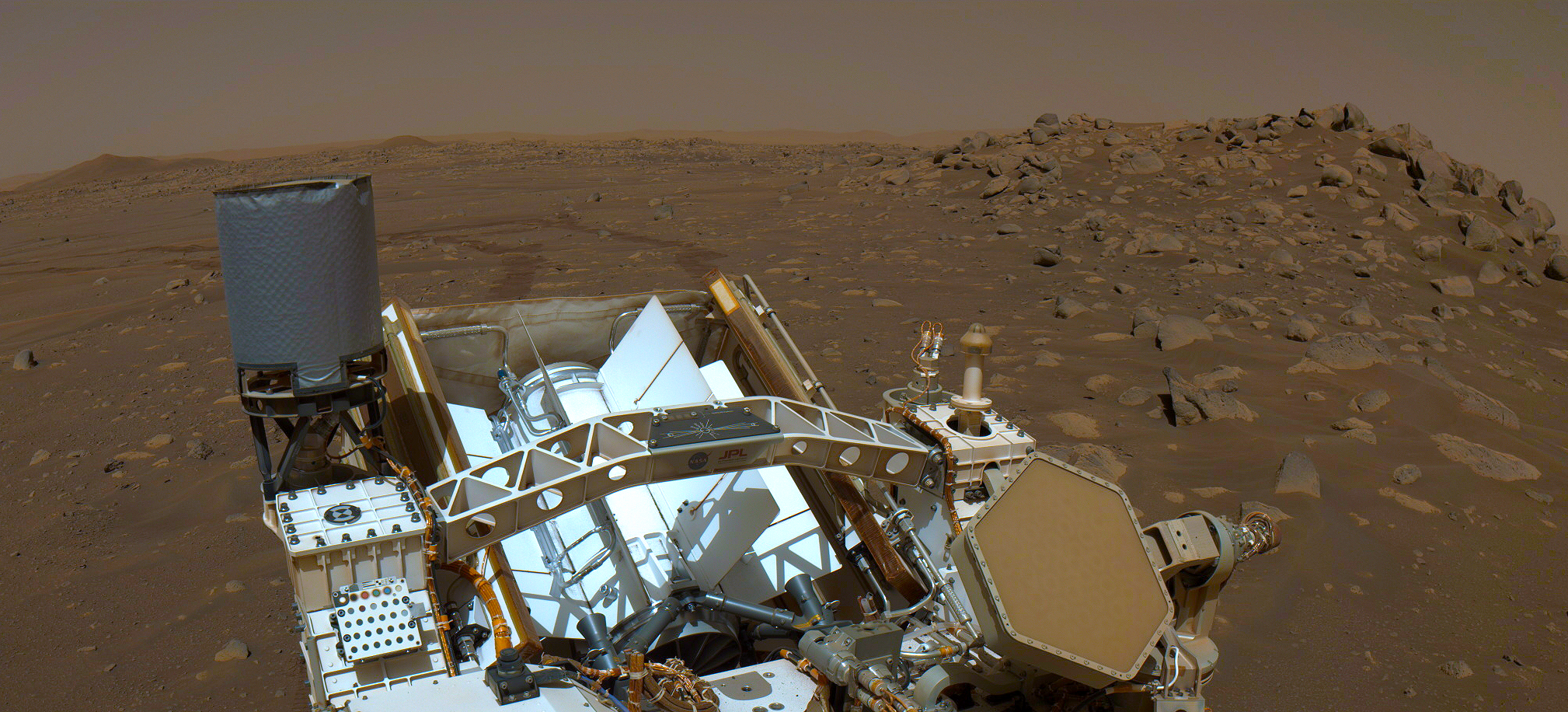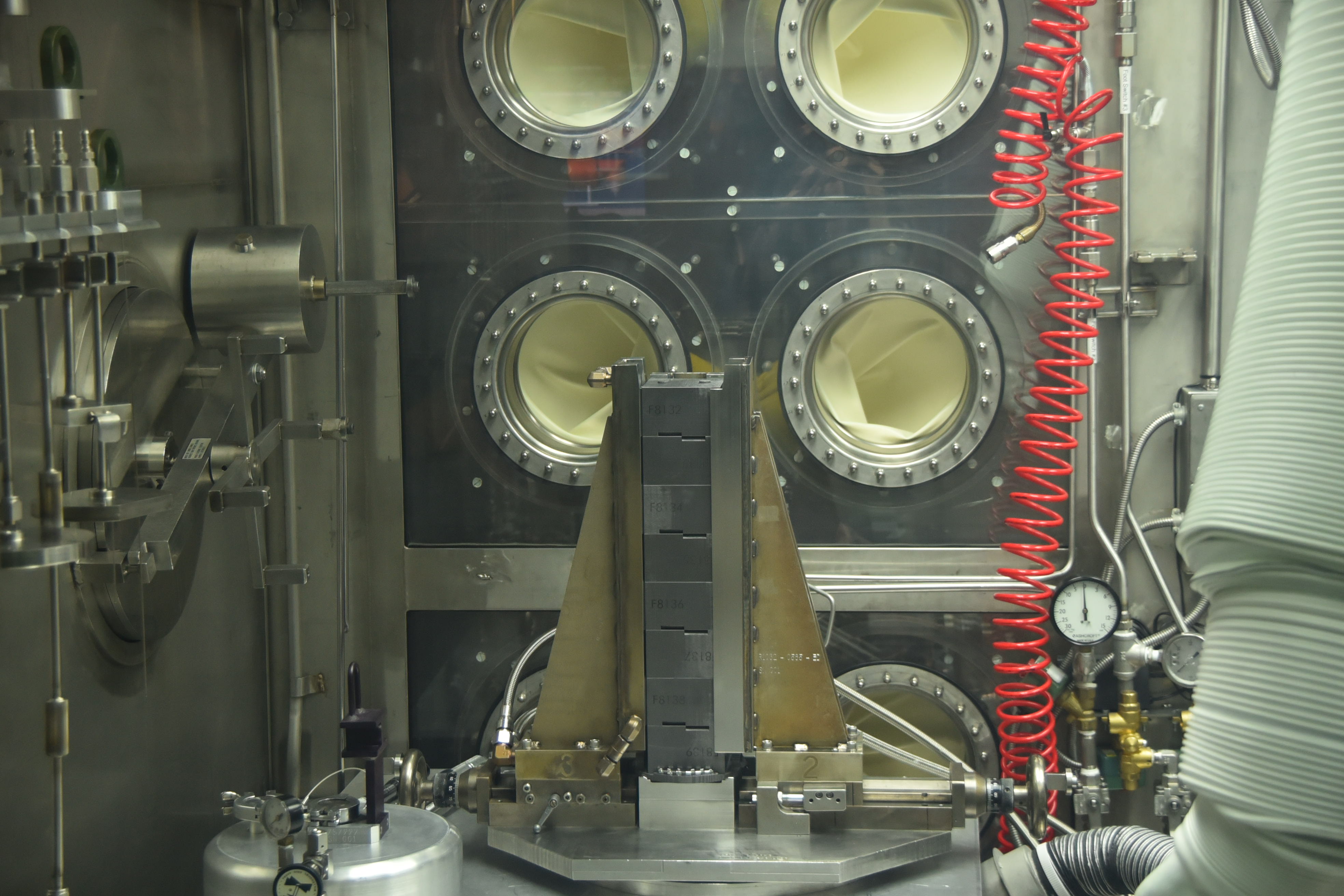Systems
Thermal
The General Purpose Heat Source module is the essential building block for the radioisotope generators used by NASA. Radisoisotope heater units keep spacecraft warm in the cold environments of deep space.

General Purpose Heat Source: The Building Block
The general purpose heat source module, or GPHS, is the essential building block for the radioisotope generators used by NASA. These modules contain and protect the plutonium-238 (or Pu-238) fuel that give off heat for producing electricity. The fuel is fabricated into ceramic pellets of plutonium-238 oxide (238PuO2) and encapsulated in a protective casing of iridium, forming a fueled clad. Fueled clads are encased within nested layers of carbon-based material and placed within an aeroshell housing to comprise the complete general purpose heat source module.
Each general purpose heat source module. is a block about four by four by two inches in size, weighing approximately 3.5 pounds (1.5 kilograms). They are nominally designed to produce thermal power at 250 watts at the beginning of a mission, and can be used individually or stacked together.
Modules have been subjected to extreme testing conditions that significantly exceeded the intensity of a wide range of potential accidents. Such tests have included simulating multiple reentries for a single module through Earth's atmosphere, exposure to high temperature rocket propellant fires, and impacts onto solid ground.
The enhanced general purpose heat source module. modules used in the latest generation of radioisotope power systems incorporate additional rugged, safety-tested features that build upon those used in earlier generations. For example, additional material (20 percent greater in thickness) has been added to the graphite aeroshell and to the two largest faces of the block-like module. These modifications provide even more protection to help to contain the fuel in a wide range of accident conditions, further reducing the potential for release of plutonium-238 that might result.
Lightweight Radioisotope Heater Unit: The Unsung Hero
Radioisotope heater units (RHUs) have been called the "unsung heroes" of radioisotope power technology. Most spacecraft can use solar energy to provide heat for keeping their structures, systems, and instruments warm enough to operate effectively. But when other heat source technologies are not feasible, an alternate heat source is required for the spacecraft.
Radioisotope heater units are small devices that use the decay of plutonium-238 to provide heat to keep spacecraft components and systems warm so that the equipment can survive long enough in the cold space environment to complete its mission. This heat is transferred to spacecraft structures, systems, and instruments directly, without moving parts or intervening electronic components.
By using radioisotope heater units, the spacecraft designer can allocate scarce spacecraft electrical power to operate the spacecraft systems and instruments. RHUs also provide the added benefit of reducing potential interference (electromagnetic interference) with instruments or electronics that might be generated by electrical heating systems.
An radioisotope heater unit contains a Pu-238 fuel pellet about the size of a pencil eraser and outputs about 1 Watt of heat. (The entire radioisotope heater unit is about the size of a C-cell battery.) Some missions employ just a few radioisotope heater units for extra heat, while others have dozens.
NASA missions enabled by radioisotope heater units
- Apollo 11 EASEP Lunar Radioisotope Heater - contained two 15W RHUs
- Pioneer 10 & 11 - 12 RHUs each
- Voyager 1 & 2 - 9 RHUs each
- Galileo - 120 RHUs (103 on orbiter, 17 on atmospheric probe)
- Mars Pathfinder Sojourner Rover - 3 RHUs
- Cassini - 117 RHUs (82 on orbiter, 35 on Huygens Titan probe)
- MER Spirit & Opportunity Rovers - 8 RHUs each




